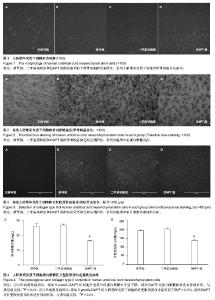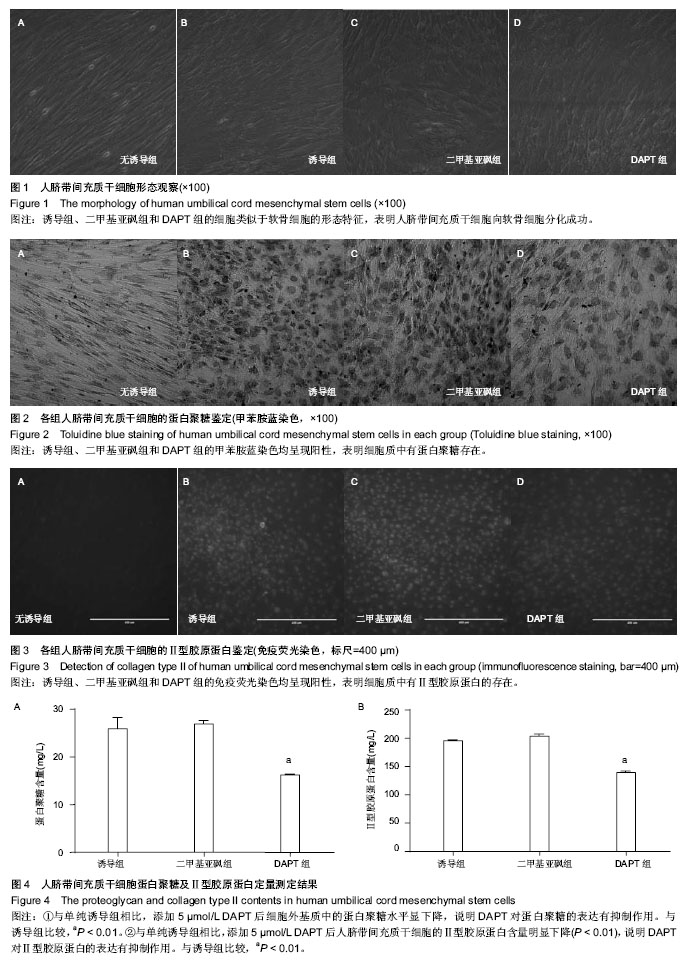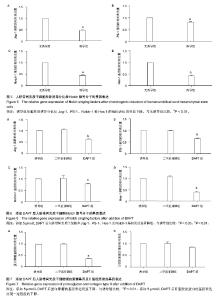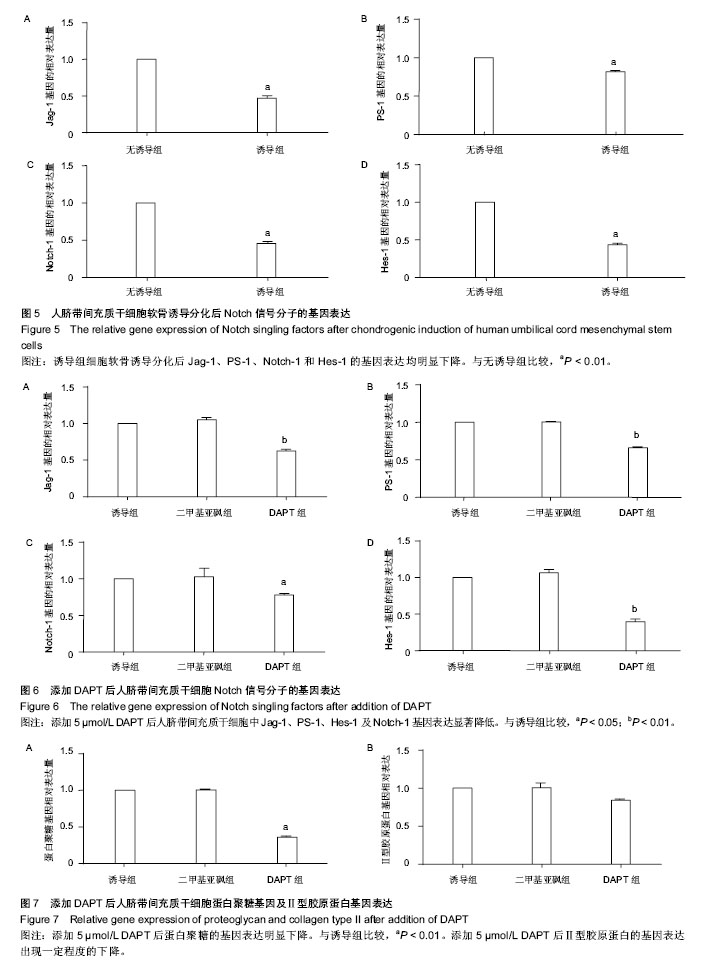| [1] Wang X, Rackwitz L, Noth U, et al.Cartilage Development, Physiology,Pathologies,and Regeneration.Strategies in Regenerative Medicine.2009: 367-393.
[2] Coates EE, Fisher JP. Cartilage Engineering: Current Status and Future Trends.Biomaterials for Tissue Engineering Applications.2011: 279-306.
[3] Marlovits S, Zeller P, Singer P,et al.Cartilage repair: Generations of autologous chondrocyte transplantation.Eur J Radiol.2006;57(1):24-31.
[4] Peeters CM, Leijs MJ, Reijman M, et al.Safety of intra-articular cell-therapy with culture-expanded stem cells in humans: a systematic literature review.Osteoarthritis Cartilage. 2013;21(10):1465-1473.
[5] Keeney M, Lai JH, Yang F. Recent progress in cartilage tissue engineering. Curr Opin Biotechnol. 2011;22(5):734-740.
[6] 孙安科,裴国献.软骨组织工程种子细胞的来源-培养和评价[J].国外医学生物医学工程分册, 2003, 26(4): 179-183.
[7] 靳小兵. 软骨组织工程研究新进展[J].中国修复重建外科杂志, 2011, 25(2): 187-192.
[8] Abdallah BM, Kassem M.Human mesenchymal stem cells: from basic biology to clinical applications.Gene Ther. 2008; 15(2):109-116.
[9] Aerts F,Wagemaker G. Mesenchymal Stem Cell Engineering and Transplantation. Genetic Engineering of Mesenchymal Stem Cells.2006: 1-44.
[10] Chen PM, Yen ML, Liu KJ, et al.Immunomodulatory properties of human adult and fetal multipotent mesenchymal stem cells. J Biomed Sci. 2011;18:49.
[11] 徐若男,施明,王福生.人脐带间充质干细胞的特征及其临床应用前景[J].中国免疫学杂志, 2010, 26(1): 82-84.
[12] Troyer DL, Weiss ML.Wharton's Jelly-derived Cells Are a Primitive Stromal Cell Population.Stem Cells. 2008;26(3): 591-599.
[13] Hansson EM, Lendahl U, Chapman G,et al. Notch signaling in development and disease.Semin Cancer Biol. 2004;14(5): 320-472.
[14] Chiba S.Notch signaling in stem cell systems.Stem Cells. 2006;24(11):2437-2447.
[15] Zhang S, Loch AJ, Radtke F,et al.Jagged1 is the major regulator of Notch-dependent cell fate in proximal airways. Dev Dyn. 2013;242(6):678-686.
[16] Dishowitz M, Zhu F, Sundararaghavan HG,et al. Jagged1 immobilization to an osteoconductive polymer activates the Notch signaling pathway and induces osteogenesis.J Biomed Mater Res A. 2014;102(5):1558-1567.
[17] Rachel A Oldershaw, Tim E Hardingham. Notch signaling during chondrogenesis of human bone marrow stem cells. Bone.2010;46(2): 286-293.
[18] Berezovska O, Frosch M, McLean P, et al.The Alzheimer-related gene presenilin1 facilitates notch1 in primary mammalian neurons.Brain Res Mol Brain Res. 1999;69(2):273-280.
[19] Watanabe N, Tezuka Y, Matsuno K,et al.Suppression of differentiation and proliferation of early chondrogenic cells by Notch.J Bone Miner Metab. 2003;21(6):344-352.
[20] Grogan SP, Olee T, Hiraoka K, et al. Repression of chondrogenesis through binding of notch signaling proteins HES-1 and HEY-1 to N-box domains in the COL2A1 enhancer site.Arthritis Rheum. 2008;58(9):2754-2763.
[21] 罗二梅,宇丽,张家文,等.还原型谷胱甘肽对人脐带间充质干细胞成软骨诱导的影响[J].中国生物工程杂志, 2013,33(3): 1-8.
[22] Onyekwelu I, Goldring MB, Hidaka C.Chondrogenesis, Joint Formation, and Articular Cartilage Regeneration.J Cell Biochem. 2009;107(3):383-392.
[23] Artavanis-Tsakonas S, Rand MD, Lake RJ. Notch signaling: cell fate control and signal integration in development. Science. 1999;284(5415):770-776.
[24] 洪奇华. Notch信号途径及其调控[J].细胞生物学杂志, 2004, 26(4): 367-371.
[25] Lin GL, Hankenson KD. Integration of BMP, Wnt, and notch signaling pathways in osteoblast differentiation. J Cell Biochem. 2011;112(12):3491-3501.
[26] Li H, Yu B, Zhang Y, et al.Jagged1 protein enhances the differentiation of mesenchymal stem cells into cardiomyocytes.Biochem Biophys Res Commun. 2006; 341(2):320- 325.
[27] Sassoli C, Pini A, Mazzanti B,et al. Mesenchymal stromal cells affect cardiomyocyte growth through juxtacrine Notch-1/Jagged-1 signaling and paracrine mechanisms: Clues for cardiac regeneration.J Mol Cell Cardiol. 2011; 51(3):399-408.
[28] Wang Y, Tu W, Lou Y, et al.Mesenchymal stem cells regulate the proliferation and differentiation of neural stem cells through Notch signaling.Cell Biol Int. 2009;33(11):1173-1179.
[29] Osathanon T, Subbalekha K, Sastravaha P, et al. Notch signalling inhibits the adipogenic differentiation of single-cell-derived mesenchymal stem cell clones isolated from human adipose tissue. Cell Biol Int. 2012;36(12): 1161-1170.
[30] Karlsson C, Jonsson M, Asp J, et al.Notch and HES5 are regulated during human cartilage differentiation.Cell Tissue Res.2007;327(3):539-551.
[31] Rebecca Williams, Larissa Nelson, Gary P Dowthwaite, et al. Notch receptor and Notch ligand expression in developing avian cartilage.J Anat.2009;215: 159-169.
[32] Hardingham TE, Oldershaw RA, Tew SR. et al.Cartilage, SOX9 and Notch signals in chondrogenesis. J Anat. 2006; 209(4):469-480.
[33] Sekiya I, Tsuji K, Koopman P, et al.SOX9 enhances aggrecan gene promoter/enhancer activity and is up-regulated by retinoic acid in a cartilage-derived cell line, TC6.J Biol Chem. 2000;275(15):10738-10744.
[34] Kita K, Kimura T, Nakamura N, et al. PI3K/Akt signaling as a key regulatory pathway for chondrocyte terminal differentiation.Genes Cells.2008;13(8):839-850.
[35] Bradley EW, Drissi MH.Wnt5b regulates mesenchymal cell aggregation and chondrocyte differentiation through the planar cell polarity pathway. J Cell Physiol. 2011; 226(6): 1683-1693. |



